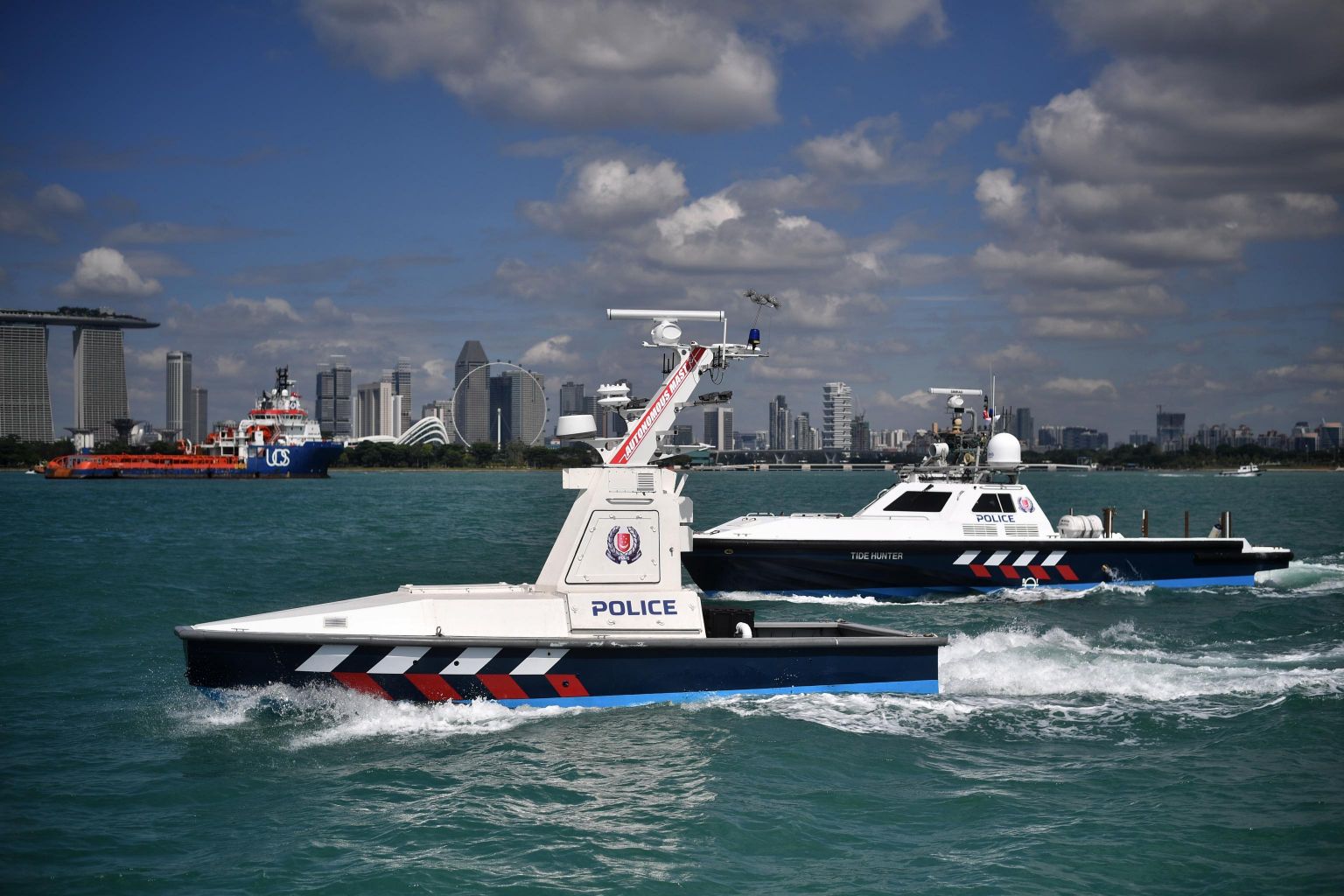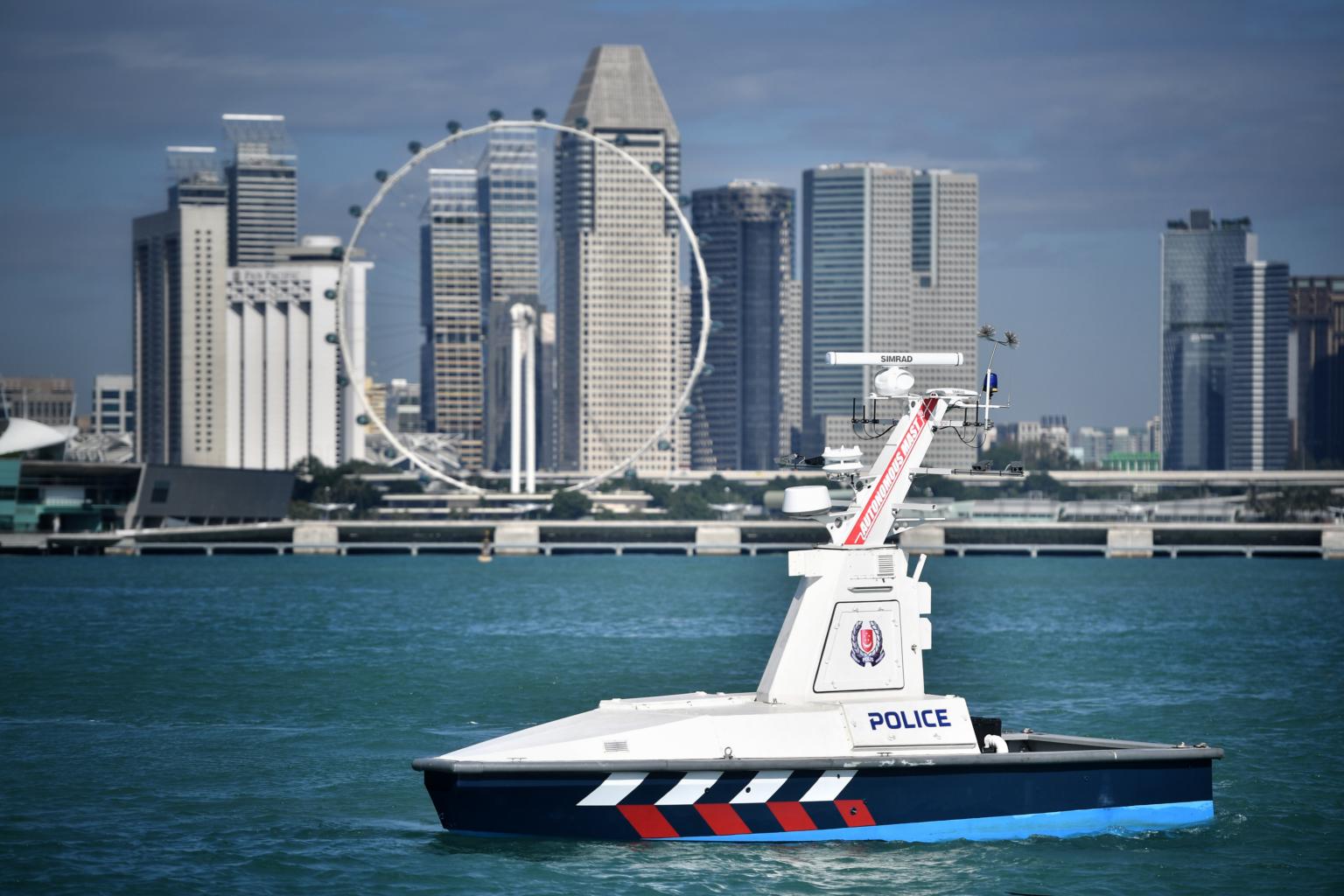Unmanned Surface Vessels part of Singapore's multi-layered defence
Sign up now: Get ST's newsletters delivered to your inbox

The Unmanned Surface Vessels can run autonomously and alert operators, who can take over the controls, when it detects suspicious activity.
ST PHOTO: ARIFFIN JAMAR
Follow topic:
SINGAPORE - Unmanned Surface Vessels (USVs), which can patrol Singapore waters autonomously, have been on trial since late last year, said the Singapore Police Coast Guard (PCG).
Two of the USVs - one measuring 9m long while the other is 16m in length - was showcased to the media on Friday (Dec 22) morning, near the waters off Marina Bay.
Leveraging on technology, USVs are aimed at forming part of Singapore's "multi-layered" defence which also includes sophisticated land-based CCTV cameras and sensors to protect our maritime borders.
One of the ways they will help is in the detection and arrest of illegal immigrants.
Figures show a decline in the number of illegal immigrants arrested by the PCG. In 2015, 94 illegal immigrants were arrested while in the following year, the figure dropped to 70, the police told The Straits Times.
From the beginning of this year up to November, 63 illegal immigrants were nabbed by PCG officers.
On the surface, the USVs look like ordinary patrol boats but they are actually loaded with a multitude of cameras, radar, sensors, search lights and loud-hailers.

ST understands that assessments are currently being made on the USVs' communication systems and the vessels' seaworthiness including monitoring how its system reacts to avoid collisions at sea.
It is not known when the trial period will end or how many USVs are being field-tested here.
At present, there are no weapon systems attached to the USVs but they do have an automatic fire extinguishing system.
On the larger USV, a rail system along its rear deck allows PCG to modify the USV to meet operational needs.
Aside from projecting police presence to deter crimes at sea or even potential terrorist acts, the USV, which are capable of speeds of about 30 knots or 55kmh, could help in easing manpower issues.
Highly trained PCG officers, however, will not be entirely replaced by these sea robots as they are still needed in seaborne operations, particularly in a heightened terror status.
For example, USVs can be programmed to patrol autonomously over a set route. Should these sentinels detect an intrusion, for example, its system will alert on shore operations.
A PCG officer will then manually take over the controls of the USV before directing the USV to the area for a closer inspection.

